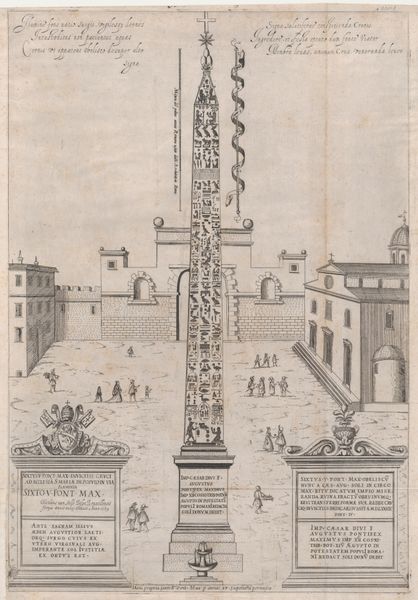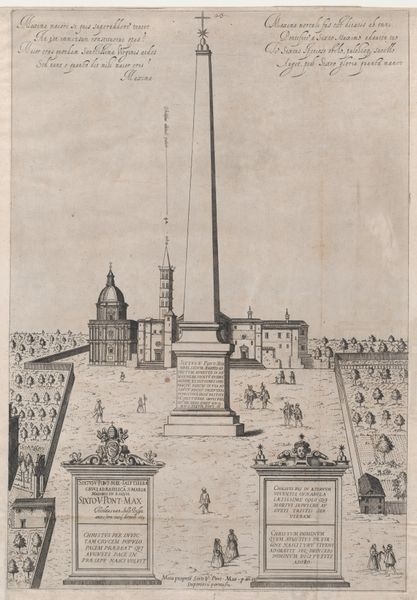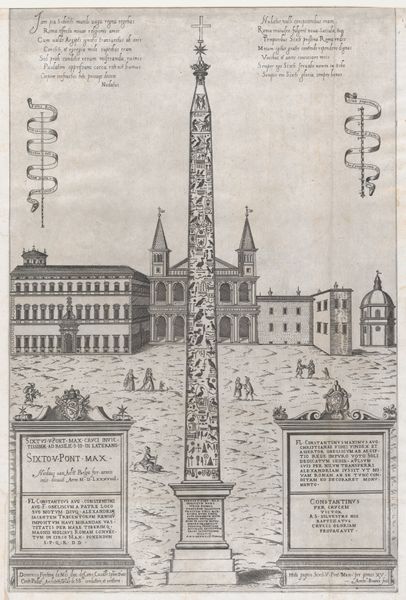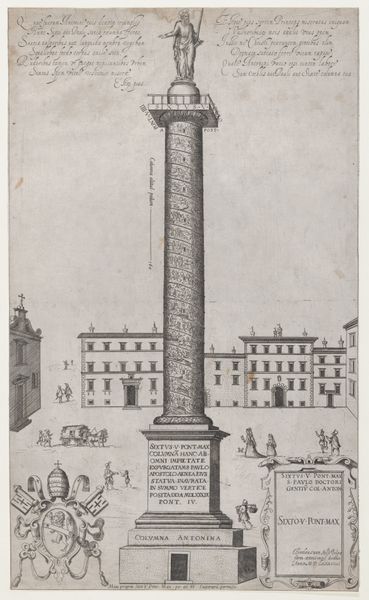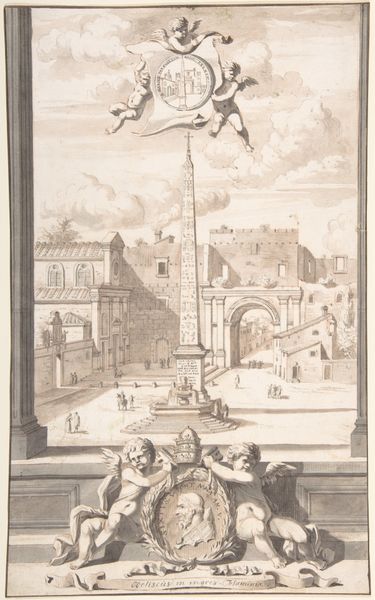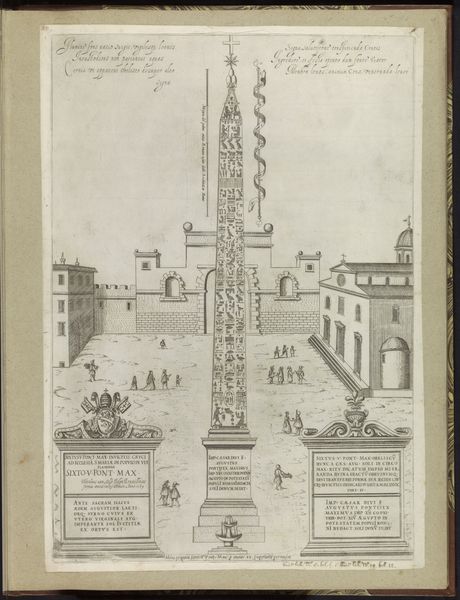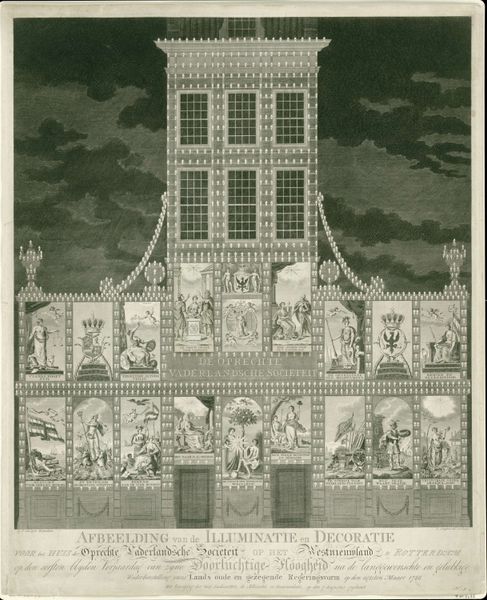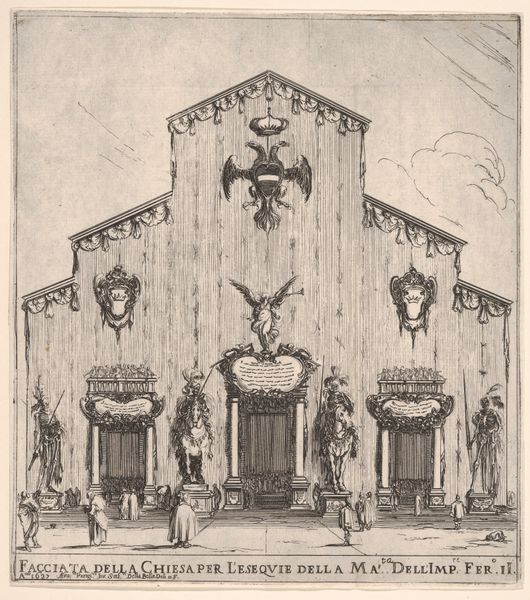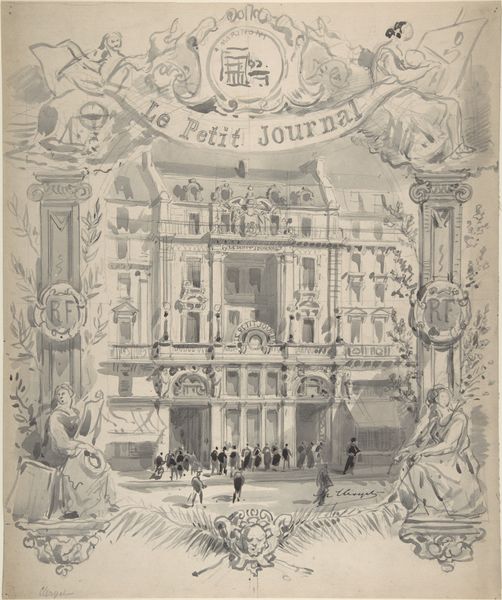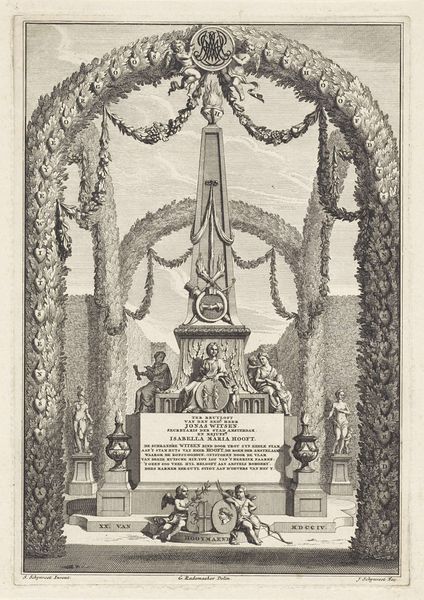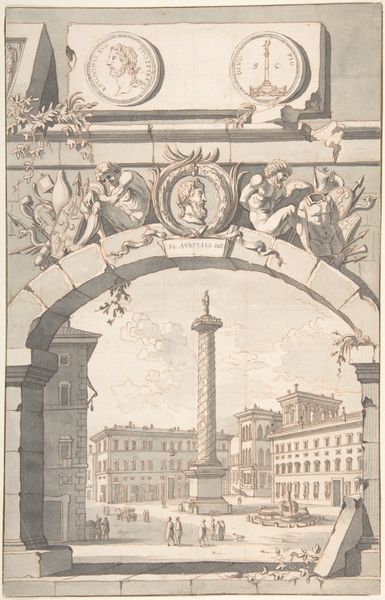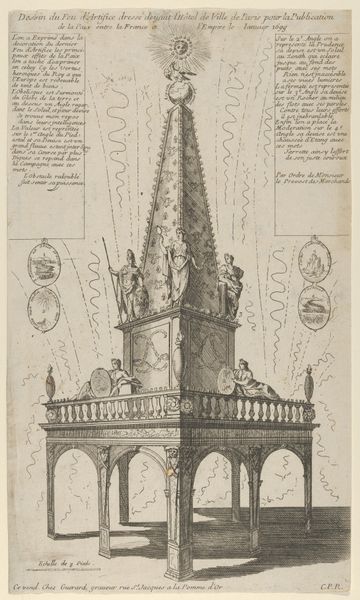
Speculum Romanae Magnificentiae: The Egyptian Obelisk of Augustus 1589
0:00
0:00
drawing, print, etching, paper, architecture
#
drawing
# print
#
etching
#
old engraving style
#
etching
#
paper
#
11_renaissance
#
cityscape
#
history-painting
#
architecture
Dimensions: sheet: 21 7/16 x 14 7/16 in. (54.5 x 36.7 cm) mount: 27 1/2 x 19 7/8 in. (69.8 x 50.5 cm)
Copyright: Public Domain
Editor: This etching from 1589, titled "Speculum Romanae Magnificentiae: The Egyptian Obelisk of Augustus" comes to us from an anonymous artist. It's a detailed cityscape centered around a towering obelisk. I'm immediately struck by the contrast between the ancient Egyptian monument and the Renaissance architecture surrounding it. What stories do you see unfolding within this scene? Curator: It's fascinating how this print encapsulates the appropriation and reinterpretation of history for ideological purposes. The Egyptian obelisk, originally a symbol of ancient power, has been transplanted to Rome and Christianized with a cross at its peak. Consider how Sixtus V, the pope at the time, used these ancient symbols to legitimize his own power and project a vision of a renewed, Christian Rome. It becomes a visual representation of power dynamics. Editor: So, it's less about preserving history and more about reshaping it? Curator: Precisely. The relocation and modification of the obelisk speak volumes about the intersection of power, religion, and cultural identity. How do you see the surrounding architectural elements reinforcing or challenging this narrative? Consider their deliberate arrangement in the scene. Editor: I notice the inscriptions at the base of the obelisk – they look Latin. It seems the artwork is literally layering different historical periods and belief systems. Almost like palimpsest, where old meanings are erased to impose the new ones. Curator: That's a very insightful way of thinking about it. What does this juxtaposition tell us about the Renaissance mindset and their relationship with antiquity? Is it admiration, exploitation, or something in between? Editor: I think I am beginning to see how much more than just architectural accuracy is contained within it; it tells the story of cultural dominance and re-contextualization. Curator: Exactly. This artwork offers a potent lens through which to examine historical narratives, religious ideology, and the ongoing process of cultural appropriation. Thank you for highlighting that.
Comments
No comments
Be the first to comment and join the conversation on the ultimate creative platform.
